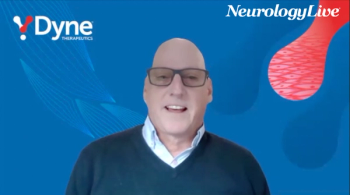
Higher Doses of Oral Prednisone Delays Relapse Onset in MOG-Antibody Disease
Patients treated with at least 12.5 mg/day of oral prednisone for at least 3 months had an 88% reduction in the risk of relapse compared with those who did not receive this regimen.
Data from a recently published retrospective, multicenter cohort study showed that daily prednisone at doses of 12.5 mg daily for a minimum of 3 months at the onset of myelin oligodendrocyte glycoprotein antibody-associated disease (MOGAD) delays time to first relapse. Overall, higher doses of prednisone led to more prolonged time to relapse, highlighting the need for effective early treatment after MOGAD onset to modify the long-term disease trajectory.1
Patients with MOGAD, a distinct antibody-associated demyelinating disorder, may experience early relapses, with increasing evidence that an active early disease course is associated with a more chronically relapsing trajectory. The study, led by Benjamin Trewin, PhD, a neuroimmunology student at Sydney Medical School, aimed to evaluate whether a specific oral prednisone regimen could effectively delay time to first relapse (TTFR), while minimizing cumulative corticosteroid exposure. Across 24 centers, detailed clinical data meeting predefined inclusion criteria were available from 109 patients.
Of those included, 70% (n = 76) experienced a relapsing course, with median TTFR of 13.7 months (95% CI, 8.2-37.9). Using a univariate model, results showed that higher oral prednisone doses were associated with a lower risk of relapse (HR, 0.96; 95% CI, 0.93-0.99; P = .0078). A multivariable model further confirmed this association, with an estimated effect size risk reduction of 3.7% (95% CI, 0.8%-6.6%) for every 1 mg/day increment in oral prednisone dose. Notably, this equated to a 17.2% (95% CI, 3.8%-28.8% reduction in the hazard of a relapse for every 5 mg/day oral prednisone dose increment.
The study authors documented that 12.5 mg/day of prednisone was the minimum effective dose for adults, as it demonstrated the best separation of the groups while maintaining precision of the estimate (HR, 0.21; 95% CI, 0.07-0.6; P = .0036). Overall, after controlling for age, sex, time to treatment, and clinical episode severity, patients treated with doses of at least 12.5 mg/day experienced a 79.1% reduction in the risk of relapse compared with those treated with less.
READ MORE:
"While many patients are commenced initially on intravenous methylprednisolone or high doses of prednisone in the range of 1 mg/kg/day, our findings suggest that this high dose may be rapidly reduced to our recommended dose of 12.5 mg/day in adults (0.16 mg/kg/day in children) for 3 months, in order to minimize total oral corticosteroid exposure while still maintaining relapse freedom,” the study authors wrote. "Given there were 16 patients in the ≥3 months treatment group, further prospective studies, with larger cohorts following the proposed dosing and duration protocol, will be essential to corroborate our findings."
In terms of safety, 12.3% of patients (8 of 65) experienced adverse events (AEs) related to prednisone exposure during the onset of an episode. None of these were grade 4 or 5. The one grade 3 event occurred in a patient who had been on 8 months of oral prednisone, and who experienced cholecystitis requiring a cholecystectomy. Investigators noted that the documentation of AEs following prednisone exposure, while likely accurate for severe short-term AEs, could underestimate more minor AEs and the long-term consequences of corticosteroid use for the onset episode.
In an addition analysis, Cox proportional hazards showed that the minimum effective duration of oral prednisone dose of at least 12.5 mg/day was identified as 3 months from MOGAD onset (HR, 0.15; 95% CI, 0.04-0.48; P = .0016). This equated to an absolute risk reduction of 42% and a number to treat of 3 to prevent 1 patient from having relapsed at 12 months. In contrast, an effective oral prednisone dosing lasting less than 3 months resulted in a substantially smaller estimated effect size (HR≥0.54) with weaker evidence of an association with TTFR.
Trewin et al also compared annualized relapse rates during the time when patients were treated at more or less than 12.5 mg/day oral prednisone during each of the initial 6 months after onset. Overall, the largest differences in annualized relapse rate between these groups occurred in the first 3 months (0.81, 3.06, and 1.44 relapses, respectively), and consistently smaller thereafter (0.58, 0.45, and 0.64). "This suggests 3 months might be an adequate duration for this regimen, without marked additional benefits with longer durations of corticosteroids," the study authors wrote.
REFERENCE
1. Trewin BP, Dale RC, Qiu J, et al. Oral corticosteroid dosage and taper duration at onset in myelin oligodendrocyte glycoprotein antibody-associated disease influences time to first relapse. Neurol, Neurosurg, Psych. Published online May 14, 2024. doi:10.1136/jnnp-2024-333463
Newsletter
Keep your finger on the pulse of neurology—subscribe to NeurologyLive for expert interviews, new data, and breakthrough treatment updates.



































